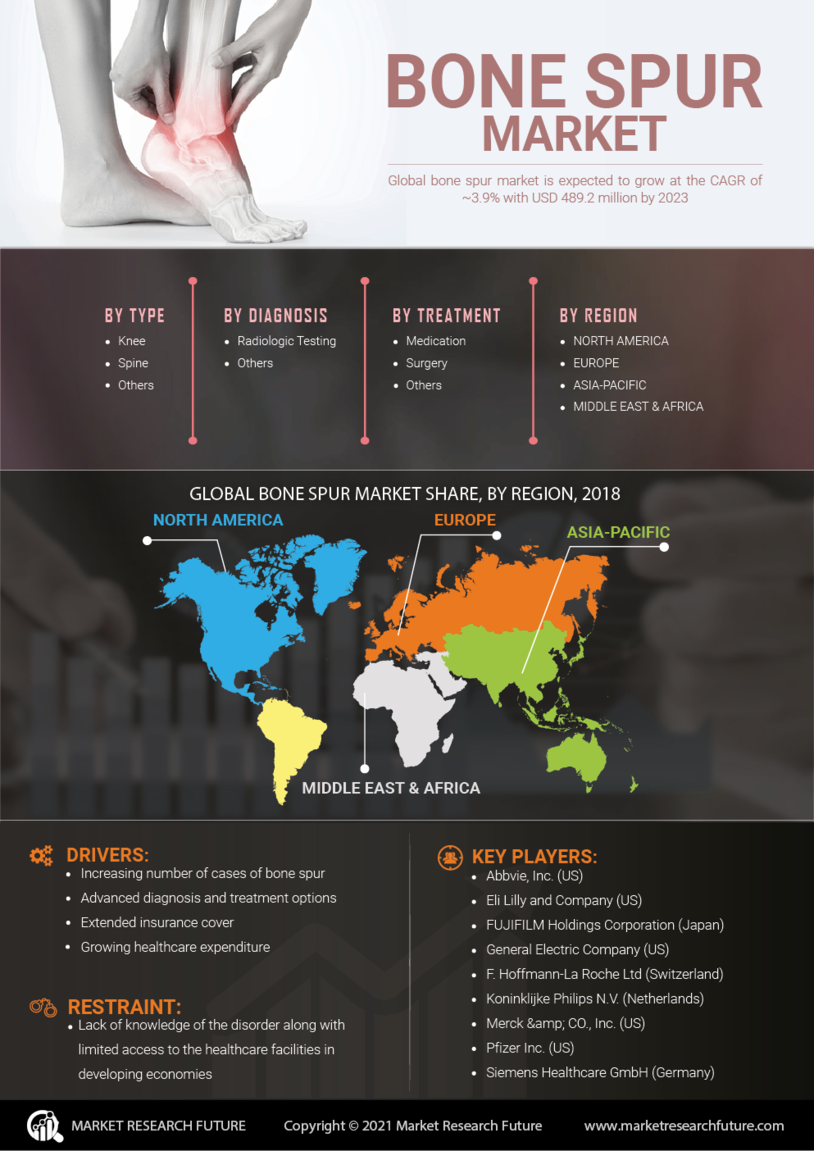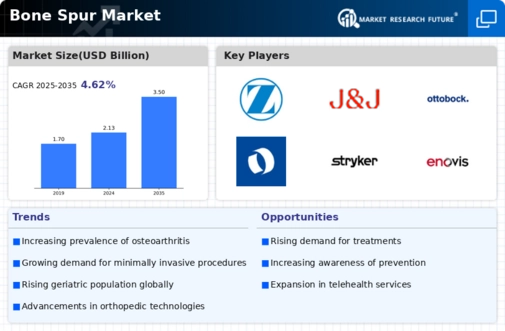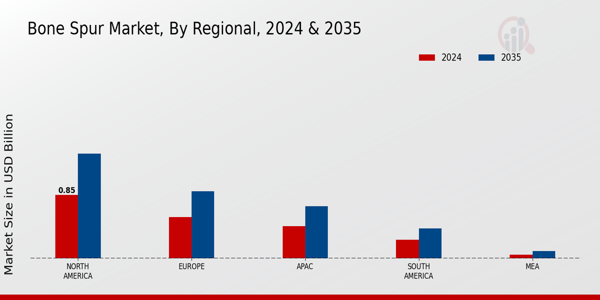Growing Awareness of Bone Health
There is a notable increase in public awareness regarding bone health, which serves as a catalyst for the Bone Spur Market. Educational campaigns and health initiatives are emphasizing the importance of maintaining bone density and preventing conditions that lead to bone spurs. This heightened awareness is prompting individuals to seek medical advice and preventive measures, thereby increasing the demand for diagnostic services and treatment options. Furthermore, the market is witnessing a rise in dietary supplements and lifestyle products aimed at promoting bone health. As consumers become more informed about the implications of bone spurs, the industry is likely to see a surge in demand for both preventive and therapeutic solutions.
Advancements in Diagnostic Imaging
Technological innovations in diagnostic imaging are significantly influencing the Bone Spur Market. Enhanced imaging techniques, such as MRI and CT scans, allow for more accurate detection of bone spurs, facilitating timely intervention. These advancements not only improve diagnostic accuracy but also enable healthcare professionals to tailor treatment plans more effectively. As imaging technology continues to evolve, the ability to visualize bone spurs in detail is likely to lead to increased diagnoses and, consequently, a higher demand for treatment options. The market is expected to benefit from these developments, as they encourage proactive management of conditions associated with bone spurs, thereby expanding the overall market landscape.
Rising Incidence of Sports Injuries
The increasing prevalence of sports-related injuries is another significant driver for the Bone Spur Market. As more individuals engage in physical activities and competitive sports, the risk of developing bone spurs due to repetitive stress and trauma rises. Data suggests that sports injuries account for a substantial portion of emergency room visits, with conditions like tendonitis and bursitis often leading to the formation of bone spurs. This trend is prompting healthcare providers to develop targeted treatment protocols for athletes and active individuals. Consequently, the Bone Spur Market is likely to expand as it addresses the specific needs of this demographic, offering both surgical and non-surgical treatment options.
Increasing Prevalence of Osteoarthritis
The rising incidence of osteoarthritis is a notable driver for the Bone Spur Market. As populations age, the likelihood of developing osteoarthritis increases, leading to a higher demand for treatments related to bone spurs. According to recent data, osteoarthritis affects millions, with projections indicating that by 2030, nearly 67 million adults in the United States alone will be diagnosed with this condition. This surge in osteoarthritis cases correlates with an increase in bone spur occurrences, as the two conditions are often interlinked. Consequently, healthcare providers are focusing on innovative treatment options, which may include surgical interventions and non-invasive therapies. The Bone Spur Market is thus poised for growth as it adapts to the needs of an aging population grappling with osteoarthritis.
Expansion of Minimally Invasive Surgical Techniques
The evolution of minimally invasive surgical techniques is transforming the Bone Spur Market. These procedures, which often result in shorter recovery times and reduced postoperative pain, are becoming increasingly popular among patients and healthcare providers alike. As surgical options for bone spur removal become less invasive, more individuals are likely to consider surgical intervention as a viable treatment option. This shift is expected to drive growth in the market, as patients seek effective solutions with minimal disruption to their daily lives. Furthermore, advancements in surgical technology, such as robotic-assisted surgery, are enhancing the precision and outcomes of these procedures, further bolstering the Bone Spur Market.



















Leave a Comment